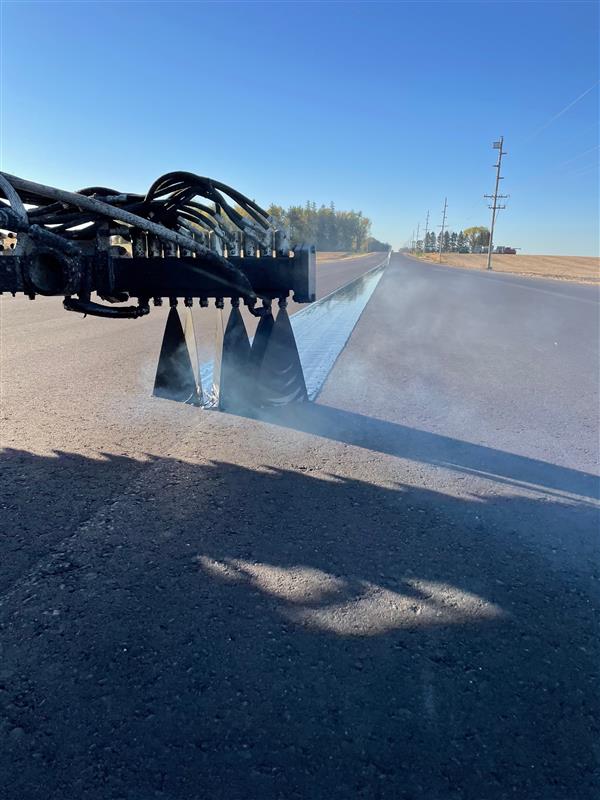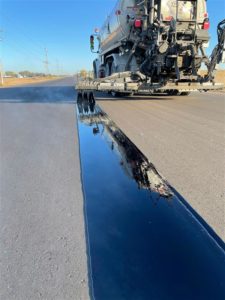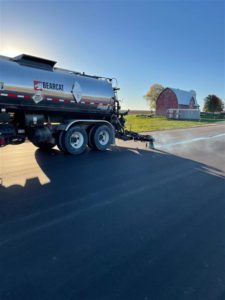 Many states are looking for methods to improve longitudinal joint performance of their asphalt pavements since these joints often fail before the rest of the surface. With their inherently lower density, longitudinal joints fail by cracking, raveling and potholing because of the intrusion of air and water. Due to their longitudinal joint issues, and after trying several less-than-successful traditional solutions, the Illinois Department of Transportation (IDOT) worked to help develop a concept to seal the longitudinal joint region. The uniqueness of this solution was to seal this joint from the bottom up. (1)
Many states are looking for methods to improve longitudinal joint performance of their asphalt pavements since these joints often fail before the rest of the surface. With their inherently lower density, longitudinal joints fail by cracking, raveling and potholing because of the intrusion of air and water. Due to their longitudinal joint issues, and after trying several less-than-successful traditional solutions, the Illinois Department of Transportation (IDOT) worked to help develop a concept to seal the longitudinal joint region. The uniqueness of this solution was to seal this joint from the bottom up. (1)
The state of Minnesota is one of the recent states that are also increasing their usage of this bottom-up solution. This case study focuses on a recent project in Dakota County, MN. This particular project was on Nicolai Av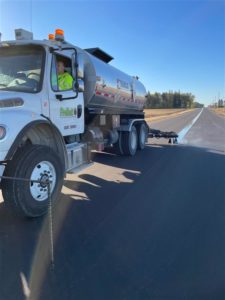 enue (County State Aid Highway 91) from Trunk Highway 61 to 210th Street. The paving contractor was McNamara and ProTack was the applicator. This particular project will study the 14,000 LF utilizing VRAM and the 2,000 LF control section. The Nicolai Avenue project was a complete reconstruction with three 2” lifts of mix (base, binder, and wear) and was approximately 16,800 feet in length with the VRAM going only between the binder and wear lift.
enue (County State Aid Highway 91) from Trunk Highway 61 to 210th Street. The paving contractor was McNamara and ProTack was the applicator. This particular project will study the 14,000 LF utilizing VRAM and the 2,000 LF control section. The Nicolai Avenue project was a complete reconstruction with three 2” lifts of mix (base, binder, and wear) and was approximately 16,800 feet in length with the VRAM going only between the binder and wear lift.
We have seen these test versus control projects for several years now. Illinois (IDOT) test pavements were evaluated after twelve years and found to have longitudinal joints that exhibited significantly better performance than the control joint sections and were in similar or better condition than the rest of the pavement. Laboratory testing of cores showed decreased permeability and increased crack resistance of mix near joints with VRAM as compared to similar mix without VRAM. (2) The life extension of the joint area is approximately three to five years, and the benefit is calculated to be three to five times the initial cost. (1)
A 2012 report by the Asphalt Institute on best practices for constructing longitudinal joints stated that improving joint performance is “probably the single most important thing to improving asphalt pavement performance” (3). To obtain good performance, proper longitudinal joint construction practices, including obtaining higher density, is critical.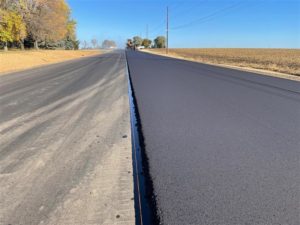
A study by the Washington State Department of Transportation on the effect of compaction on HMA found that the percent loss in service life from seven percent voids to ten percent voids is 17 percent and drops to 36 percent loss at twelve percent voids (4). Clearly, high voids (low density) have a negative effect on the performance of the pavement and joint. High void content mixes have higher permeability, which the state of Kentucky recognized as accelerating pavement deterioration through de-bonding of asphalt layers and asphalt stripping (5).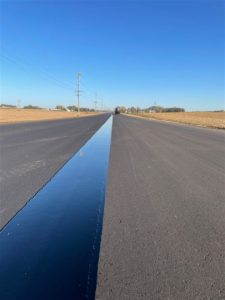
Joint Quality During Construction
The two most common methods of measuring joint quality during construction are density and permeability. Density is by far the more common method since it is typically used to determine if the compaction efforts resulted in the mat meeting contract specifications. Permeability has been used in special studies.
Increasing density will lower water permeability which should lead to improved joint performance. As stated by Cooley et al. (6), permeable pavement allows water to permeate the void structure which leads to moisture-induced damage, while air penetrating into a pavement can lead to excessive age hardening of the binder and, thus, premature cracking. A study for PennDOT (7) by Solaimanian found that for 12.5-mm nominal maximum aggregate size (NMAS) mixes, permeability increases drastically when in-place air voids are above approximately seven to eight percent; for 9.5-mm NMAS mixes, the value is eight percent. A field permeability limit of 1.5 x 10-3 cm/second was suggested.
The critical void contents, where permeability shows a marked increase, occur at approximately 10 and 12 percent voids (88 and 90 percent compaction). While permeability is a more direct measurement of water penetrating voids and its potential of causing long-term problems, it is not a practical field control tool. The correlations with air voids are useful but show that the critical void content to limit water intrusion and therefore long-term problems is not always achieved or specified (i.e. NRRA findings).
Cost-Benefit per Two-Lane Mile of VRAM with Different Overlay Service Lives (2)
The life extension of the joint area is approximately three to five years, and the benefit is calculated to be three to five times the initial cost.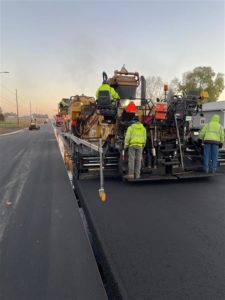
How VRAM Works?
Prior to paving, VRAM material is sprayed on an 18” wide location directly under the area where the longitudinal joint will be located. (2) When the HMA is placed and compacted over VRAM, the material migrates upward into the fresh pavement. It fills voids to help ensure the joint is less permeable.
Asphalt Materials, a midwestern-based company that has been involved in the asphalt business since 1956, supplies an industry-leading VRAM under the brand name J-Band®.
Notes:
- Transportation Research Board paper. https://journals.sagepub.com/doi/10.1177/03611981211044451
- VRAM, Void Reducing Asphalt Membrane is referred to in Illinois as LJS, Longitudinal Joint Sealant. The typical VRAM application for centerline treatments is a width of 18”.
- M. Buncher and C. Rosenberger. Best Practices for Constructing and Specifying HMA Longitudinal Joints. Asphalt Institute,http://www.asphaltinstitute.org/engineering/longitudinal-joint-information, accessed April 21, 2020.
- R. N. Linden, J. P. Mahoney, and N. Jackson. Effect of Compaction on Asphalt Concrete Performance. Transportation Research Record 1217, Journal of the Transportation Research Board, 1989.
- L. J. Fleckenstein, D. L. Allen and D. B. Schultz. Compaction at the Longitudinal Construction Joint in Asphalt Pavements (KYSPR-00-208). Kentucky Transportation Center at the University of Kentucky, Lexington, KY, 2002.
- C. L. Allen, B. D. Prowelland E. R. Brown. Issues Pertaining to the Permeability Characteristics of Coarse-Graded Superpave Mixes, NCAT Report 02-06. National Center for Asphalt Technology, Auburn University, Alabama, 2002.
- M. Solaimanian. Correlation of Laboratory-Compacted and Field-Compacted Hot-Mix Asphalt Permeability, Project No. 060704. Pennsylvania State University, State College, PA, 2010.

